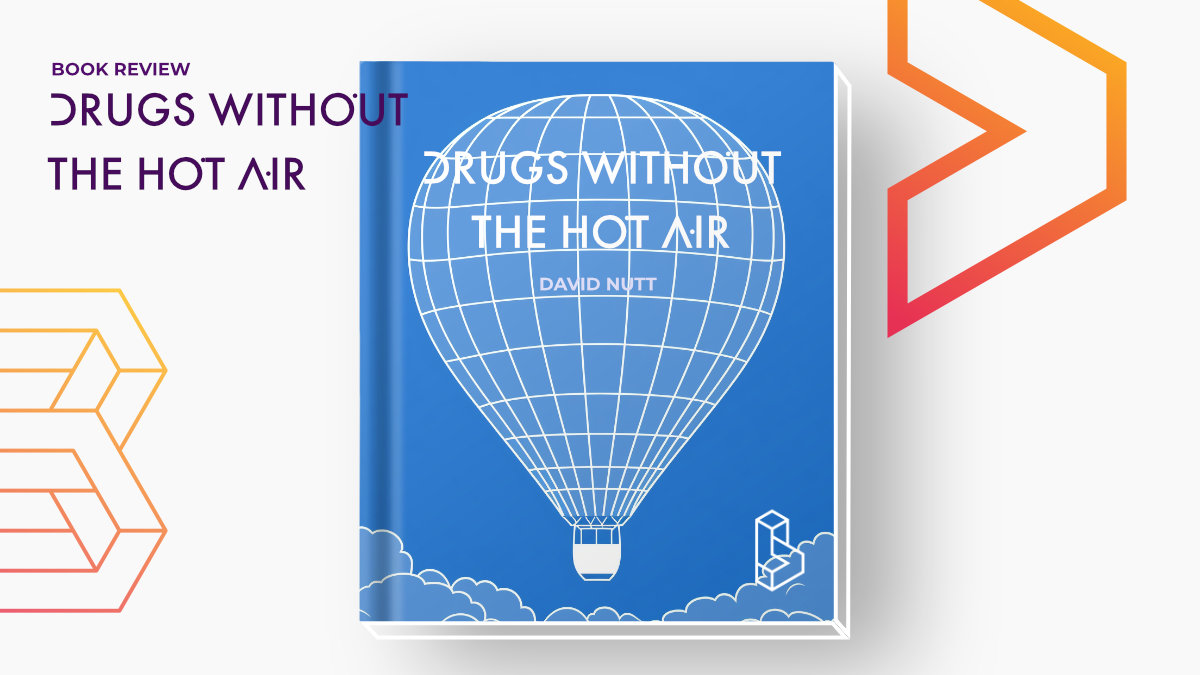Drugs Without the Hot Air by David Nutt is an eye-opening book that delights with statistics and rational information about drugs and their effects. Effects on you, your environment, government, international effects, and effects compared to riding a horse. To get the last reference you have to read the book, something I recommend you do if you’re interested in a policy-oriented overview of drugs.
One thing that stands out and really makes the book shine, is the constant comparison of ‘drugs’ with our two most widely used substances – tobacco and alcohol. Minimizing the harms of legal and illegal drugs is the subtitle of the book. Drug Policy should be aimed at reducing harm (which is David Nutt’s perspective too), but more often is driven by headlines whilst the effects of alcohol and tobacco are much larger (in most ways you can measure it) than ‘hard’ drugs.
Publisher Summary
“From health to family to society, this informative exploration takes an evidence-based view of all the factors involved in drug use. Applying the same objective criteria to legal and illegal substances, an argument is made that legality is not a clear measure for harm. Tackling a variety of questions, such as Which is more harmful—Ecstasy or alcohol? Can addiction be cured? and Does the “War on Drugs” have serious unintended effects that can hurt children?, this analysis equips readers with the ability to make educated decisions regarding drugs both personally and in their communities. Broadening the scope of the discussion, a framework is explored for formulating national drug policies that will minimize a myriad of harms—social, medical, criminal, financial, and environmental.“
Summary Review
One thing that angers (as far as a book can convey that) David is the use of too stringent drug categories for the ones that do less harm. This diminishes our trust in the system. It makes many people do illegal things (and he argues that the legal effects – getting jailed – are much worse than smoking it) – kids included. And makes research with compounds that could help (classical psychedelics, ketamine, MDMA) way more difficult.
One of the ‘scares’ in the UK (on which the book focusses, but lessons apply widely) was that of Ecstasy/mollie/MDMA. In the book (and this paper – published in a leading psychology journal) he argues for the greater danger from Equasy. A condition from which (from the paper) “The harmful consequences are well established – about 10 people a year die of it and many more suffer permanent neurological damage as had my patient. It has been estimated that there is a serious adverse event every 350
exposures and these are unpredictable, though more likely in experienced users who take more risks with equasy. It is also associated with over 100 road traffic accidents per year – often with deaths.” It’s riding a horse (and the accidents related to it).
There are multiple factors to keep in mind, this includes the harm done to the user, others in the community, others around the world, nature (in total he identifies 16 sorts of harm). Based on this model he (with the backing of a panel and much research) concludes the overall harm to be ordered as follows (on a 0-100 scale):
- Alcohol 72
- Heroin 55
- Crack 54
- Methylamphetamine 33
- Cocaine 27
- Tobacco 26
- Amphetamine 23
- Cannabis 20
- GHB 19
- Benzodiazepines 15
- Ketamine 15
- Methadone 14
- Mephedrone 13
- Butane 11
- Anabolic Steroids 10
- Ecstasy 9
- Khat 9
- LSD 7
- Buprenorphine 7
- Mushrooms 6
See the full ISCD report here.
People have been taking drugs for a very long time. One of the main reasons is to ‘change our consciousness’. With alcohol we feel more open to talking, with tobacco less nervous, with heroin we can get the pain to go away. There are a variety of reasons for taking drugs, and they are almost all reasons that are hardwired into us.
The book does not focus only on psychedelics (as this site does), but does devote a chapter to them and explains the relatively little harm they do to the user (or their environment). It even mentions some studies that are related to LSD and the ability to increase creativity (and mentions anecdotes from Steve Jobs to Francis Crick).
The most interesting/out-there chapter is the one about the future of drugs. It ponders if we can use gene sequencing to make drugs more personalized. Both for treatment (as is already being done in some cases), and also for recreational use and identifying possible genetic risks. The future might also help us negate some of the negative side effects of drugs (e.g. Tuesday dip after MDMA use, the memory loss from alcohol). How much governments are open to innovation and research is one of the main factors as to where the future will bring us.
About the author
David Nutt is known as a great advocate for looking at drugs and their harm in an objective and scientific manner. This got him dismissed as ACMD chairman. He subsequently wrote this book. He has also founded the informational website Drug Science.

